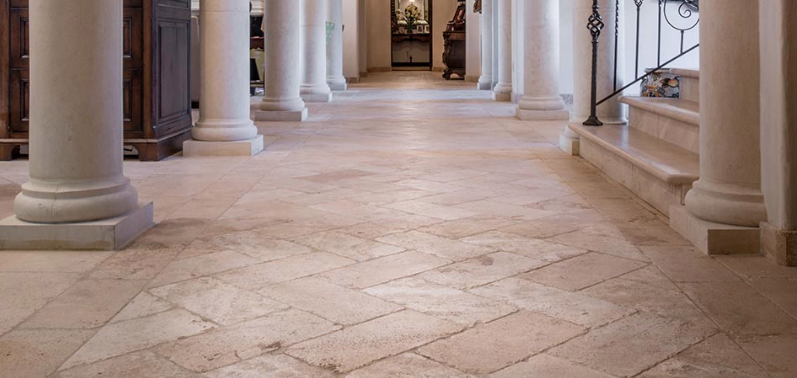What is travertine? Where does it come from? What is it used for? Read on to learn everything you need to know about travertine here.
Are you looking to improve the look of your home?
Travertine can be the perfect option to add a look of natural elegance to your home. But you might be asking what is travertine? What is it used for?
Read on for our guide to all things travertine.
What is Travertine?
Travertine is a type of limestone formed under specific conditions. It is considered to be one of the most attractive forms of limestone, and is harder and stronger than standard limestone.
Travertine is most often found forming in hot springs. When calcium carbonate evaporates, this is what forms it.
Where Should You Install it?
Due to being a softer stone, it isn’t suited for everything. You can usually find travertine used for:
• Countertops
Due to its consistent color and long streaks, it makes a beautiful countertop choice. But it isn’t as durable and hardwearing as other countertop choices.
• Interior Floors
Travertine tiles make for durable flooring that can stand up to daily wear and tear. With a honed finish, your floor will be a real showstopper.
• Patios
Having a travertine patio has become popular. Not only is it durable and has a high-friction surface, but it also looks great too. It’ll create a high-end finish to your outdoor space.
• Pool Decks
Travertine’s high-friction, slip-resistant surface makes it the perfect choice for pool decks. But be mindful to sand it down a little, otherwise, it can be too rough on bare feet.
• Bathtub Surrounds
Having a bathtub surround has become a popular choice. With a polished finish, travertine will make a statement with its unique patterning.
• Shower Walls
Travertine also makes for good wall tiles for the shower. It will especially look good if paired with a bathtub surround to tie the shower and the bath together.
What Colors Can You Get?
You can buy travertine in a variety of colors; anything from golds and creams, to greys. The color depends on the quarry it came from and what minerals are in that area. Some popular types are:
• Crema Viejo
• Silver
• Silyon
• Travertine Giallo
• Yellow
What Are Your Finishing Options?
Travertine is versatile when it comes to finishing options. But here are the four most common ones:
• Tumbled
Tumbled travertine has a natural, textured feel, with the edges rounded off. It is usually used for outdoor spaces like patios and pool decks.
• Brushed
Brushed travertine looks and feels like tumbled travertine. Only the edges are not rounded off. It is also most often used in outdoor spaces.
• Honed
Honed travertine has a smooth, matte finish. You’ll often see it used in bathrooms, kitchens or for interior flooring. Honed travertine has the stone pores filled in making it more stain-resistant.
• Polished Travertine
Polished travertine is still smooth, but has a shiny look to it. Like honed though, it is more stain-resistant than other types of finish.
Does Travertine Need Sealing?
It’s not necessary, but it’s recommended. Especially if you’re using it for a countertop. Travertine is porous, making it prone to staining, scratching, and etching. By sealing, you help to protect your stone from damage. Sealing your travertine can help prolong its lifespan, as Clean Image of Orlando explains.
How Do You Care for Travertine?
To clean it, you’ll need to use a cleaner that is for travertine. Don’t use harsh cleaners as this can cause damage. And make sure to avoid any spills, especially acidic substances.
To Wrap Up
What is travertine? Well, now you know.
Travertine’s unique, long-streak patterning will create a real statement to be the envy of all your friends and family. Whether you use it indoors, outdoors or both.
But due to it’s soft, porous nature it can be prone to damage over time. If you’re using it in high-traffic areas, it’s advised to get it sealed.
If you found this article useful, check out our other website posts.




